-
 Bitcoin
Bitcoin $76,444.7530
-3.77% -
 Ethereum
Ethereum $1,473.8355
-5.46% -
 Tether USDt
Tether USDt $0.9991
-0.08% -
 XRP
XRP $1.7965
-5.51% -
 BNB
BNB $553.4919
-0.36% -
 USDC
USDC $0.9999
-0.02% -
 Solana
Solana $105.2981
-1.74% -
 TRON
TRON $0.2303
0.81% -
 Dogecoin
Dogecoin $0.1422
-4.62% -
 Cardano
Cardano $0.5587
-4.41% -
 UNUS SED LEO
UNUS SED LEO $8.9866
1.01% -
 Toncoin
Toncoin $2.9933
-4.74% -
 Chainlink
Chainlink $10.9113
-4.81% -
 Stellar
Stellar $0.2215
-4.76% -
 Avalanche
Avalanche $16.1163
-3.29% -
 Sui
Sui $1.9371
-3.89% -
 Shiba Inu
Shiba Inu $0.0...01065
-6.69% -
 Hedera
Hedera $0.1469
-3.29% -
 MANTRA
MANTRA $6.2058
-1.53% -
 Dai
Dai $1.0000
0.01% -
 Bitcoin Cash
Bitcoin Cash $269.3457
-2.08% -
 Polkadot
Polkadot $3.3773
-5.87% -
 Litecoin
Litecoin $69.2204
-2.50% -
 Ethena USDe
Ethena USDe $0.9986
-0.01% -
 Bitget Token
Bitget Token $4.0180
-3.25% -
 Pi
Pi $0.5649
-4.50% -
 Hyperliquid
Hyperliquid $11.1928
-2.80% -
 Monero
Monero $195.3885
-4.41% -
 OKB
OKB $50.9235
-0.59% -
 Uniswap
Uniswap $4.7688
-6.95%
How to Optimize the Performance of GPU Mining Equipment
Optimize GPU mining by addressing cooling, overclocking, power supply, and software settings to maximize hashrate and profitability while preventing thermal throttling.
Apr 02, 2025 at 04:35 pm
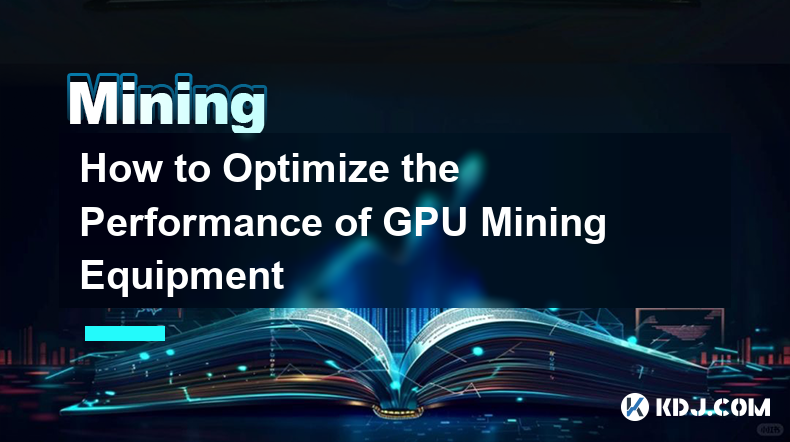
Understanding GPU Mining and its Performance Bottlenecks
GPU mining, the process of using graphics processing units (GPUs) to validate cryptocurrency transactions and earn rewards, relies heavily on efficient hardware and software configurations. Optimizing performance involves identifying and addressing bottlenecks that hinder the mining process. These bottlenecks can stem from various sources, including insufficient cooling, inefficient overclocking, inadequate power supply, and suboptimal mining software settings. Understanding these factors is crucial for maximizing your mining profitability.
Optimizing Cooling for Maximum Hashrate
Effective cooling is paramount for maintaining GPU stability and preventing thermal throttling, a process where the GPU reduces its clock speed to avoid overheating. This directly impacts your mining hashrate, the measure of your computational power.
- Ensure adequate airflow: Use a well-ventilated mining rig case with sufficient fans to circulate cool air around your GPUs. Consider adding extra case fans or employing high-static pressure fans for better cooling performance.
- Monitor GPU temperatures: Use monitoring software like MSI Afterburner or HWInfo64 to track GPU temperatures in real-time. This allows you to identify overheating issues promptly and adjust cooling solutions accordingly.
- Apply thermal paste: Ensure your GPUs have a fresh layer of high-quality thermal paste applied between the GPU die and the heatsink. This enhances heat transfer and lowers operating temperatures.
- Consider liquid cooling: For high-end GPUs or larger mining rigs, liquid cooling systems offer superior cooling capabilities compared to air cooling. They can significantly reduce temperatures and allow for higher overclocks.
Overclocking Your GPUs for Increased Hashrate
Overclocking involves increasing the GPU's core clock speed and memory clock speed beyond their factory settings. This can lead to a significant boost in hashrate, but it also increases power consumption and heat generation. Proceed cautiously and monitor temperatures closely.
- Use appropriate software: Utilize tools like MSI Afterburner or Afterburner to carefully adjust clock speeds and voltage. Start with small increments and test for stability.
- Monitor for errors: Watch for artifacts or crashes during overclocking. If instability occurs, reduce the overclock settings.
- Find the sweet spot: The optimal overclock settings will vary depending on the GPU model and cooling solution. Experiment to find the highest stable overclock that doesn't cause instability or excessive heat.
- Consider undervolting: Reducing the GPU's voltage while maintaining a stable clock speed can improve efficiency and reduce power consumption without significantly impacting hashrate.
Power Supply Considerations for Efficient Mining
A reliable and sufficiently powerful power supply is essential for stable GPU mining. Underpowering your GPUs can lead to instability, crashes, and reduced performance. Always choose a power supply with a higher wattage than the total power draw of your GPUs and other components.
- Calculate power draw: Accurately estimate the power consumption of your GPUs and other components to ensure you select a power supply with sufficient wattage. Consider adding a safety margin of 20-30%.
- Choose a high-quality PSU: Opt for a reputable brand with high efficiency ratings (80+ Gold or Platinum) to minimize energy waste and ensure reliable operation.
- Monitor power consumption: Use monitoring software to track the power consumption of your mining rig and ensure it remains within the power supply's limits.
- Proper cable management: Ensure proper cable management to avoid overheating and potential short circuits.
Software Optimization for Maximum Efficiency
The choice of mining software and its configuration significantly impact mining performance. Choosing the right software and optimizing its settings is crucial.
- Select a suitable mining software: Popular options include NiceHash Miner, TeamRedMiner, and PhoenixMiner. The best choice depends on the algorithm you are mining and your GPU model.
- Configure mining software settings: Adjust settings like the intensity level, fan speed, and overclock settings within the mining software. These settings can affect hashrate and power consumption.
- Update drivers and software: Regularly update your GPU drivers and mining software to benefit from bug fixes, performance improvements, and algorithm optimizations.
- Monitor mining software statistics: Use the software's built-in monitoring tools to track your hashrate, rejected shares, and other relevant metrics. This helps identify and address potential problems.
Maintaining and Upgrading Your Mining Equipment
Regular maintenance and timely upgrades are crucial for long-term mining profitability.
- Clean your rig regularly: Dust accumulation can hinder cooling and reduce performance. Regularly clean your mining rig to remove dust buildup from fans and heatsinks.
- Monitor hardware health: Use monitoring tools to track the health of your GPUs, power supply, and other components. Address any potential issues promptly.
- Consider GPU upgrades: As new GPU models are released, consider upgrading your mining equipment to take advantage of improved performance and efficiency.
- Plan for obsolescence: The profitability of GPU mining can fluctuate with algorithm changes and hardware advancements. Plan for potential obsolescence and adjust your mining strategy accordingly.
Frequently Asked Questions
Q: What is the best GPU for mining?
A: The "best" GPU depends on the cryptocurrency being mined and its associated algorithm. High-end GPUs from NVIDIA and AMD often perform well, but their profitability fluctuates. Research the most efficient cards for your target cryptocurrency.
Q: How often should I clean my mining rig?
A: The frequency depends on your environment. In dusty environments, cleaning every few weeks is recommended. In cleaner environments, cleaning every few months might suffice. Regular inspection is key.
Q: Can I overclock my GPU too much?
A: Yes, overclocking beyond the GPU's stable limits can lead to instability, crashes, and even hardware damage. Always monitor temperatures and stability closely. Start with small increments and test thoroughly.
Q: What is thermal throttling?
A: Thermal throttling is a safety mechanism where the GPU reduces its clock speed to prevent overheating. This significantly reduces hashrate. Proper cooling is crucial to avoid it.
Q: How do I choose the right power supply for my mining rig?
A: Calculate the total power draw of all components (GPUs, motherboard, fans, etc.) and add a 20-30% safety margin. Choose a high-quality power supply with a wattage rating that exceeds this total. Consider the efficiency rating (80+ Gold or Platinum).
Q: What is the impact of rejected shares on mining profitability?
A: Rejected shares indicate that your mining hardware submitted invalid solutions. High rejection rates lower your effective hashrate and reduce your mining earnings. Investigate the cause (overclocking instability, driver issues, etc.) and correct it.
Disclaimer:info@kdj.com
The information provided is not trading advice. kdj.com does not assume any responsibility for any investments made based on the information provided in this article. Cryptocurrencies are highly volatile and it is highly recommended that you invest with caution after thorough research!
If you believe that the content used on this website infringes your copyright, please contact us immediately (info@kdj.com) and we will delete it promptly.
- "Cardano (ADA) Price Could Dip Below $0.60, Following Previous Market Cycle"
- 2025-04-09 05:10:12
- BONK, the well-known meme coin, has risen over 35% in the last week, attracting meme coin investors in the market. So, what caused this rally?
- 2025-04-09 05:10:12
- Bitcoin (BTC) Investors May Not Exactly Feel It, but BTC Has Been a Relatively Good Bet
- 2025-04-09 05:05:12
- Donald's Bitcoin (DONBTC) Could Turn Early Investors into Multi-Millionaires, Like Shiba Inu (SHIB) and Dogecoin (DOGE) Did
- 2025-04-09 05:05:12
- 6 Upcoming Kraken Listings That Could Be the Next Big Thing in Crypto
- 2025-04-09 05:00:13
- COTI Unveils New Privacy-Focused Blockchain to Reshape Web3 Transactions
- 2025-04-09 05:00:13
Related knowledge
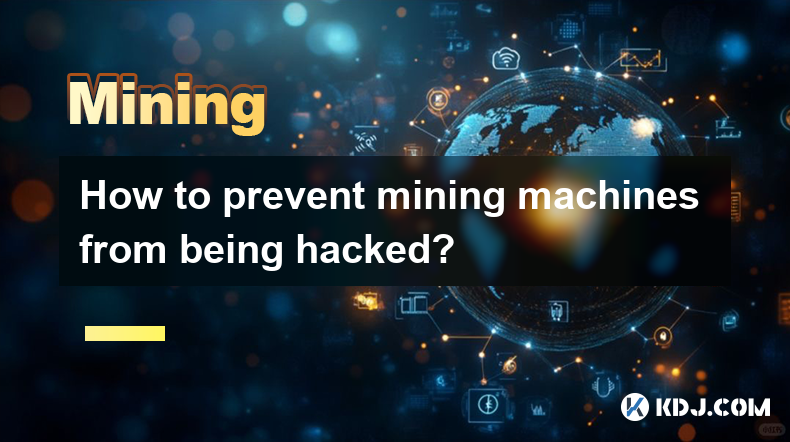
How to prevent mining machines from being hacked?
Apr 08,2025 at 09:00pm
In the world of cryptocurrency, mining machines play a crucial role in securing networks and validating transactions. However, these machines are also prime targets for hackers looking to exploit vulnerabilities for financial gain. Preventing mining machines from being hacked requires a multi-faceted approach that includes robust security measures, regu...
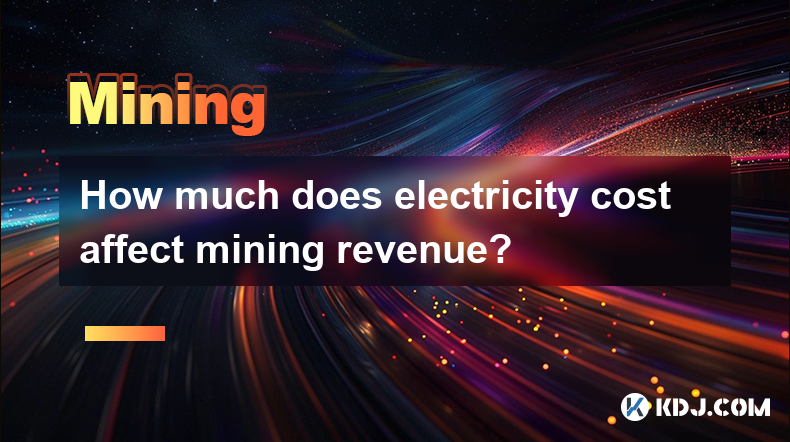
How much does electricity cost affect mining revenue?
Apr 08,2025 at 05:29pm
The cost of electricity plays a crucial role in determining the profitability of cryptocurrency mining. Mining revenue is directly impacted by the expenses incurred in running mining equipment, with electricity costs often being the most significant operational expense. Understanding how electricity costs affect mining revenue is essential for miners lo...
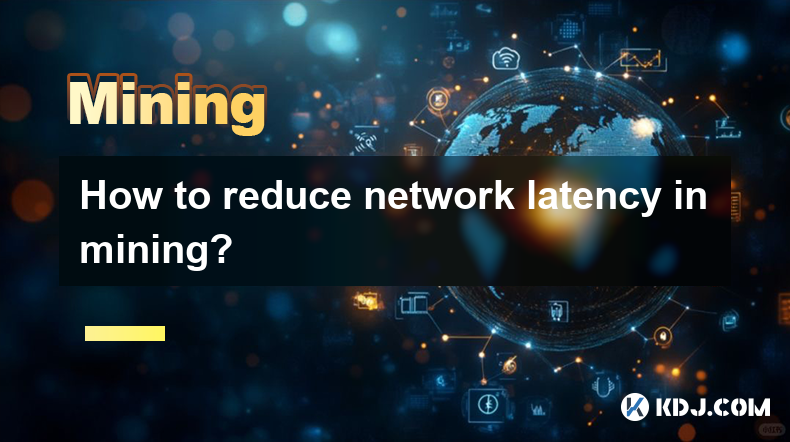
How to reduce network latency in mining?
Apr 09,2025 at 02:28am
Understanding Network Latency in MiningNetwork latency is a critical factor in the world of cryptocurrency mining. It refers to the time it takes for data to travel from its source to its destination across a network. In mining, lower latency can mean the difference between successfully adding a block to the blockchain and missing out on the reward. Red...

What is hashrate fluctuation?
Apr 08,2025 at 08:08pm
Hashrate fluctuation refers to the changes in the total computational power used by miners to process transactions and secure the blockchain network. This metric is crucial in the cryptocurrency world, particularly for networks like Bitcoin, Ethereum, and others that rely on proof-of-work (PoW) consensus mechanisms. Understanding hashrate fluctuation is...

Why does mining require a full node?
Apr 08,2025 at 06:49pm
Mining in the cryptocurrency world is a complex process that involves verifying transactions and adding them to the blockchain. One of the key components required for mining is a full node. But why is a full node necessary for mining? Let's delve into the reasons and explore the intricacies of this requirement. What is a Full Node?A full node is a progr...
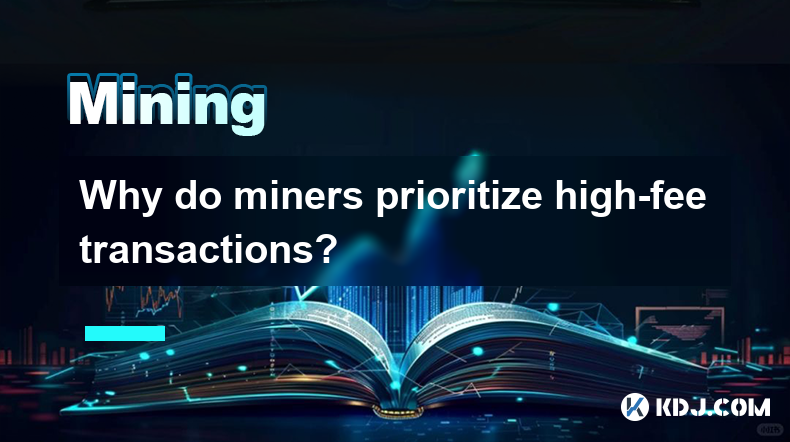
Why do miners prioritize high-fee transactions?
Apr 08,2025 at 05:01pm
Miners in the cryptocurrency ecosystem, particularly in networks like Bitcoin, play a crucial role in validating and adding transactions to the blockchain. One of the key factors that influence their decision-making process is the transaction fee associated with each transaction. Miners prioritize high-fee transactions primarily because these fees direc...

How to prevent mining machines from being hacked?
Apr 08,2025 at 09:00pm
In the world of cryptocurrency, mining machines play a crucial role in securing networks and validating transactions. However, these machines are also prime targets for hackers looking to exploit vulnerabilities for financial gain. Preventing mining machines from being hacked requires a multi-faceted approach that includes robust security measures, regu...

How much does electricity cost affect mining revenue?
Apr 08,2025 at 05:29pm
The cost of electricity plays a crucial role in determining the profitability of cryptocurrency mining. Mining revenue is directly impacted by the expenses incurred in running mining equipment, with electricity costs often being the most significant operational expense. Understanding how electricity costs affect mining revenue is essential for miners lo...

How to reduce network latency in mining?
Apr 09,2025 at 02:28am
Understanding Network Latency in MiningNetwork latency is a critical factor in the world of cryptocurrency mining. It refers to the time it takes for data to travel from its source to its destination across a network. In mining, lower latency can mean the difference between successfully adding a block to the blockchain and missing out on the reward. Red...

What is hashrate fluctuation?
Apr 08,2025 at 08:08pm
Hashrate fluctuation refers to the changes in the total computational power used by miners to process transactions and secure the blockchain network. This metric is crucial in the cryptocurrency world, particularly for networks like Bitcoin, Ethereum, and others that rely on proof-of-work (PoW) consensus mechanisms. Understanding hashrate fluctuation is...

Why does mining require a full node?
Apr 08,2025 at 06:49pm
Mining in the cryptocurrency world is a complex process that involves verifying transactions and adding them to the blockchain. One of the key components required for mining is a full node. But why is a full node necessary for mining? Let's delve into the reasons and explore the intricacies of this requirement. What is a Full Node?A full node is a progr...

Why do miners prioritize high-fee transactions?
Apr 08,2025 at 05:01pm
Miners in the cryptocurrency ecosystem, particularly in networks like Bitcoin, play a crucial role in validating and adding transactions to the blockchain. One of the key factors that influence their decision-making process is the transaction fee associated with each transaction. Miners prioritize high-fee transactions primarily because these fees direc...
See all articles






















































































